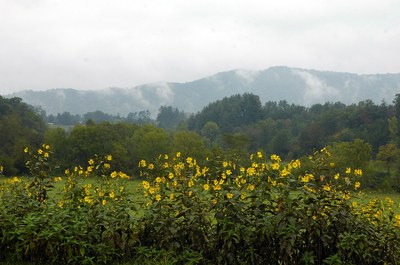National Report on Sustainable Forests
USDA Forest Service
This summary is taken from text in the published assessment document referenced below.
Purpose
The United States is richly endowed with forests, and their care and conservation have been a national concern for more than a century. This report, the National Report on Sustainable Forests—2010, provides data and analysis aimed at addressing this concern by enhancing dialogue and decisions in pursuit of the goal of forest sustainability. The report relies on the Montréal Process Criteria and Indicators (MP C&I) for Forest Sustainability to organize and present data relevant to U.S. forests and their sustainability across ecological, social, and economic dimensions. It is linked to the forest sustainability reporting processes of the other countries participating in the Montréal Process, and it is also linked to domestic efforts at local and regional scales that use criteria and indicators to help ensure the sustainability of their forests.
A similar report, also using the MP C&I, was published in 2004, and the release of the current report marks another milestone in our continuing efforts to build the knowledge base needed to sustainably manage forested ecosystems in the United States.
Key findings
 Are our forests sustainable? This complex question has no easy yes or no answers. On the whole, no evidence suggests that we are “using up” our forests. In fact, the total area of forests has been stable, and the volume of wood found on them increasing. But a number of issues cause significant concern; they range from regional forest fragmentation and loss to widespread increases in forest insect infestation and other disturbances. Potential changes in climate compound the risks and uncertainties associated with these issues. The following additional key findings have emerged from the information presented in the report:
Are our forests sustainable? This complex question has no easy yes or no answers. On the whole, no evidence suggests that we are “using up” our forests. In fact, the total area of forests has been stable, and the volume of wood found on them increasing. But a number of issues cause significant concern; they range from regional forest fragmentation and loss to widespread increases in forest insect infestation and other disturbances. Potential changes in climate compound the risks and uncertainties associated with these issues. The following additional key findings have emerged from the information presented in the report:
-
At 751 million acres, forest area in the United States remains stable.
-
Fragmentation and loss of forest land are occurring in many regions and localities, owing mostly to human development.
-
Levels of forest disturbance are rising, including a three-fold increase in insect-induced mortality relative to the previous report. The number and complexity of values and demands society places on forests are increasing.
-
Wood products production is declining relative to growing consumption, with increasing imports filling the gap.
-
Forest management activity is declining in many areas as forest products firms divest themselves of timber lands.
-
Sustained capacity and willingness to manage forests sustainably are evidenced by a growing number of public-private collaborations on projects devoted to landscape-scale conservation.
Overarching Issues
 The following three overarching issues emerged from the analysis of the data and from the extensive comments received from the public—issues that promise to be of crucial importance to forests and their management in the coming years.
The following three overarching issues emerged from the analysis of the data and from the extensive comments received from the public—issues that promise to be of crucial importance to forests and their management in the coming years.
- The loss of forest lands and working forests. The gross statistics on forest area mask substantial fragmentation and outright losses in forest land at the regional level, particularly in areas adjacent to growing urban areas or where recreational development is prominent. Fragmentation and loss is further compounded by the sale of forest lands to firms and individuals whose primary focus is not active forest management for timber production, forest conservation, or other purposes. With the loss of an active management focus and the revenue streams that often accompany it, the survival of these forests and their associated ecosystem services is in question.
- Forests, climate change, and bioenergy. Climate change presents profound challenges and opportunities for forests and forestry in the United States. We are already seeing altered patterns of forest disturbance associated with changes in temperature, precipitation, and insect activity. The resulting changes in the distribution of forest cover and species distribution will play out over the coming decades. At the same time, forests serve as a major carbon sink with the potential to further sequester large amounts of carbon from the atmosphere, and they may also serve as a major source of carbon neutral, renewable energy in the future. To the extent that these potentials are realized, carbon sequestration and bioenergy production could radically alter the ecological and economic landscape of forest management in our country.
- Forest health and disturbance patterns. The elevated levels of forest disturbance documented in this report promise to profoundly shape both our forest landscapes and the ways we manage them. In many areas, particularly the West, confronting the complex causes and effects of disturbance will remain a dominant, if not the dominant, consideration in forest management and policy for the foreseeable future.
The Path Forward
In response to the challenges and opportunities these issues present, the report makes a number of general policy recommendations. First and foremost is the need for robust and engaged dialogue about forests and forest sustainability at all levels of society. This need is in keeping with the core philosophy underlying the report: better data leads to better dialogue and, thereby, to better decisions. Another general recommendation is that solutions are often best accomplished at the landscape scale, spanning different types of land uses and involving collaboration among different stakeholders. This recommendation embodies an all-lands approach to forest conservation. Other recommendations include the following:
-
Flexible, adaptive management techniques that work with natural processes need to be continually developed to meet the challenges posed by climate change and growing levels of forest disturbance.
-
Innovative market mechanisms that account for and generate revenues from the various ecosystem services forests provide are sorely needed.
-
Carbon sequestration and wood-based bioenergy should be vigorously pursued, but not at the cost of other aspects of forest sustainability.
Content and Structure of the Report
More than 30 Forest Service scientists, senior staff, and outside collaborators contributed to the production of this report. Through an extensive process of comment and review organized by the Roundtable on Sustainable Forests, the report incorporates the views of a broad range of individuals representing the community of interest surrounding forests and forest sustainability in our country today.
The report is divided into two main parts. Part I discusses the concepts underlying forest sustainability, summarizes major issues and conditions affecting U.S. forests, describes numerous sustainability efforts under way at local and regional levels, and identifies the implications of the report’s findings for policy and action.
Part II contains the data reports addressing each of the 7 criteria and 64 indicators in the MP C&I. The data reports provide the data foundation for the analyses found in Part I and are, by themselves, important resources for specific data; general information; and references related to forest ecosystems, their current conditions, and their sustainability.
Preferred citation
USDA Forest Service. 2011. National Report on Sustainable Forests - 2010. FS-979. USDA Forest Service, Washington, DC.

























